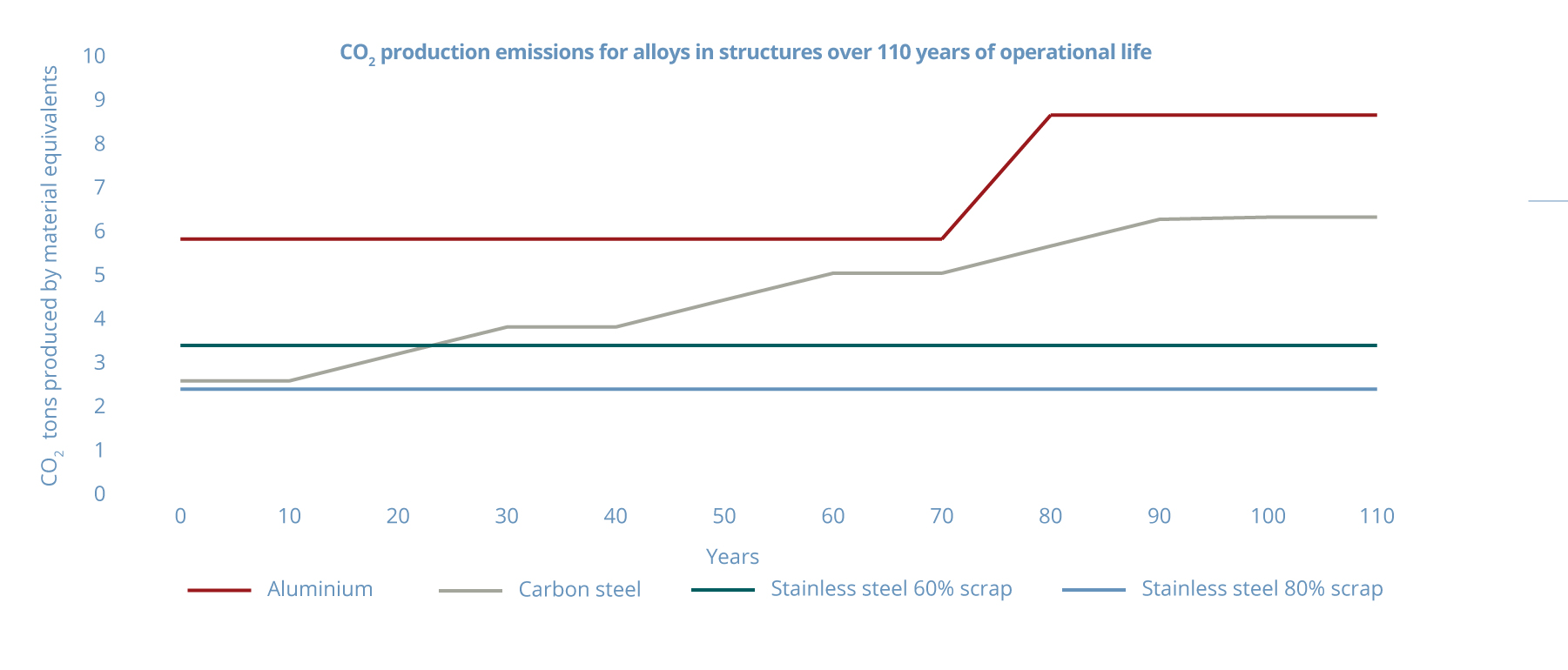Stainless Steel CO2 Emissions Report

The world stainless association has released a report outlining the stainless steel industry emissions and data related to these emissions.
Like any other major industry, the stainless steels industry consistently endeavours to reduce its operational CO2 emissions year-on-year. Industry direct emissions and indirect emissions have, due to solid industry improvement efforts, progressively reduced over the last decade. The released report outlines the differences between the scrap-based and Nickel Pig Iron (NPI) production systems and the emissions associated with them. Although 95% of stainless steel scrap is collected for recycling at the end-of-life, there is not enough stainless steel scrap available globally, therefore these production routes will co-exist for the foreseeable future.
Depending on the scrap mix, the following average CO2 emissions result from the production of stainless steels. It is to be noted that these totals include Scope 1, Scope 2 and Scope 3 emissions and are defined as ‘Cradle to Gate’ emissions.
| Scrap mix | CO2 emissions per ton of stainless steel |
| 85% scrap | 1.95 |
| 75% scrap | 2.45 |
| 50% scrap | 3.70 |
| 30% scrap | 6.80 |
It is fair to say that the production emissions for stainless steels only are partly informative because stainless steels avoid emissions during the use phase of materials and products. There are two high-level production systems at play, both of which are necessary to support the global demand for stainless steels. Over the coming years the production emissions associated with NPI will progressively fall as greener technologies in the production of NPI become more widely utilised.

It should also be noted that the life cycle emissions associated with using stainless steels offer a different and more compelling perspective of the benefits of using sustainable and resilient materials. For significant products and installations around 70% of the life cycle emissions occur in the usage or operational phase and therefore selecting materials that do not degrade and equally do not require significant maintenance and/or partial replacement presents a different and much lower emissions profile when compared to other material choices.
 |
To illustrate how stainless steels can in the long run be the material with the lowest CO2 emissions, the life cycle of two reusable water bottles are shown. At first sight, the stainless steel water bottle has higher CO2 production emissions, but because this bottle will last 20 years or more and a PET bottle will need to be replaced at least 10 times in these 20 years, the stainless steel water bottle will be the lowest emitter of CO2. |
More information can be found in the report, which you can find here.
Do not hesitate to contact worldstainless should you have any questions. You can contact us by using info@worldstainless.org







